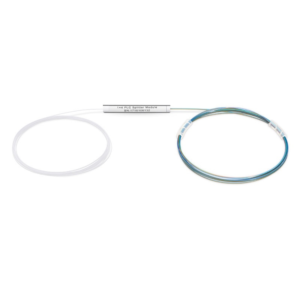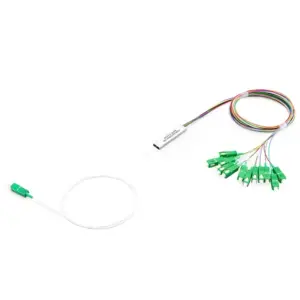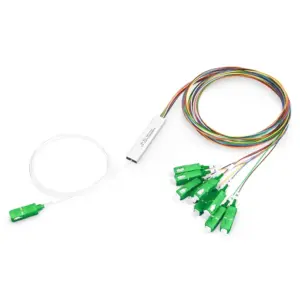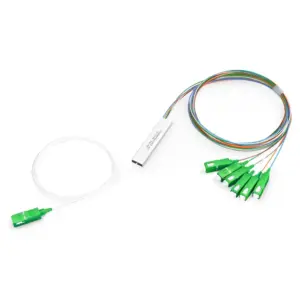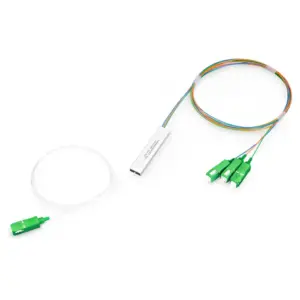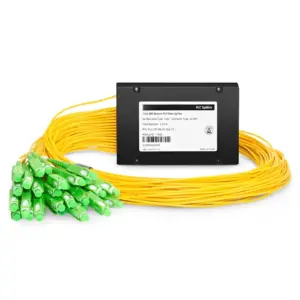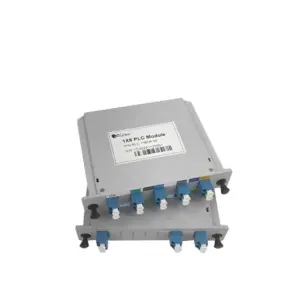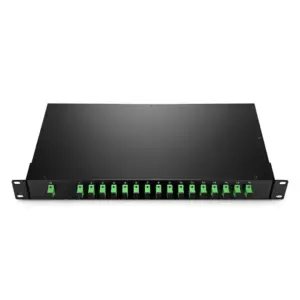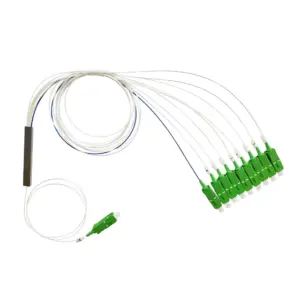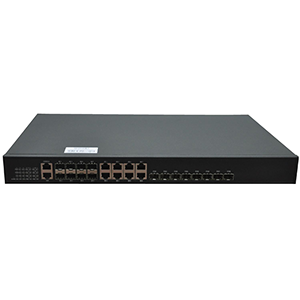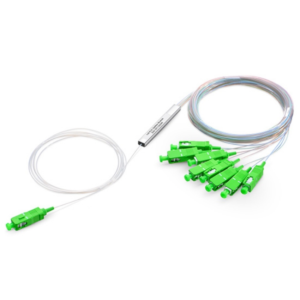Bare fiber PLC optical splitter, as one of the key components of optical communication systems, is leading the development of the industry with its excellent performance and stability. In this article, I will take you to deeply understand the basic concepts of bare fiber PLC optical splitter, explain its basic definition and working principle, as well as its role and importance in optical communications.
We will analyze in detail the technical parameters and performance characteristics of the bare fiber PLC optical splitter, highlight its advantages and stability in optical signal transmission, and present you with a feast of technology. By discussing application scenarios and actual cases, the important role and application effects of bare fiber PLC splitters in optical networks are demonstrated.
I. Basic concepts of bare fiber PLC optical splitter
Bare fiber PLC (Planar Lightwave Circuit) optical splitter is an optical device used to distribute input optical signals to multiple output ports without the need for additional optical fiber connectors or cladding. The following is the basic definition and working principle of bare fiber PLC optical splitter, as well as its role and importance in optical communications:
Basic definition and working principle:
- Bare fiber PLC optical splitter is an optical device based on planar waveguide technology. It usually uses silicon-based or silicon-glass substrates. The input optical signal is distributed to each output port according to a certain proportion through optical distribution devices.
- The working principle is based on the coupling effect of planar waveguides. Through the design and processing of optical devices, the input optical signal is split and distributed, so that the input optical signal can be evenly distributed to multiple output channels.
The role and importance in optical communications:
- Bare fiber PLC optical splitter plays an important role in optical communication systems and is mainly used for distribution, multiplexing and monitoring of optical signals.
- It can distribute the input optical signals to different optical paths, realize the sharing and transmission of optical signals between multiple users, and improve the transmission efficiency and utilization of the optical communication system.
- In addition, bare fiber PLC optical splitters can also be used for monitoring and detection of optical signals, achieving real-time monitoring and management of optical communication systems, and improving the stability and reliability of the system.
In summary, the bare fiber PLC optical splitter, as a key component in the optical communication system, has an important role and application value, providing a reliable optical distribution solution for the development and application of optical communication technology.
II. Technical performance and advantage analysis
Technical parameters and performance characteristics:
-
Splitting ratio: Bare fiber PLC optical splitter can provide different splitting ratios according to needs, evenly distributing the input optical signal to multiple output channels.
-
Wavelength range: Usually has the characteristics of a wide wavelength range and can support the transmission of optical signals of multiple wavelengths.
-
Insertion loss: The insertion loss of bare fiber PLC optical splitters is usually low, ensuring the stability and quality of optical signals during transmission.
-
Cross-coupling: With low cross-coupling, it can reduce optical signal interference between different output channels and improve system reliability.
Advantages and Stability:
-
High splitting ratio: The bare fiber PLC optical splitter can evenly distribute the input optical signal to multiple output channels to meet the optical signal sharing needs among multiple users.
-
Stability and reliability: Using high-quality materials and precision processing technology, it has good stability and reliability, ensuring the stability and quality of optical signals in long-distance transmission.
-
Low loss: Low insertion loss ensures the transmission quality and stability of optical signals and reduces the overall loss of the optical communication system.
-
Flexibility and scalability: Bare fiber PLC optical splitter has good flexibility and scalability and is suitable for different optical communication systems and application scenarios.
In summary, bare fiber PLC optical splitters have excellent technical performance and stability, play an important role in optical signal transmission, and provide reliable optical distribution solutions for the design and deployment of optical communication systems.
III. Application scenarios and actual cases
Application scenarios:
-
Optical fiber access network: Bare fiber PLC optical splitters are widely used in fiber access networks, including fiber to the home, fiber to the building, etc., to distribute optical signals to multiple user terminals to achieve broadband Access service.
-
Optical sensor network: In an optical fiber sensor network, bare fiber PLC splitters are used to distribute optical signals to different sensor nodes to achieve monitoring of environmental parameters and data collection.
-
Data center optical interconnection: In the optical interconnection of data centers, bare fiber PLC splitters are used to distribute optical signals to different servers or storage devices to achieve data transmission and integration.
Actual case:
-
Urban optical network construction: In the construction of urban optical networks, bare fiber PLC splitters are used for optical fiber access, transmission and distribution, achieving urban broadband coverage and smart city construction.
-
Optical communication network optimization: In the optical communication network optimization project, the bare fiber PLC splitter is used to optimize the optical signal transmission path and network topology, improving the performance and efficiency of the optical communication system.
-
Fiber optic sensor application: In the fiber optic sensor application project, the bare fiber PLC optical splitter is used to distribute and collect optical signals, achieving real-time monitoring and control of physical quantities, chemical quantities and other parameters.
The above cases demonstrate the important role and practical application effects of bare fiber PLC optical splitters in optical networks, providing reliable optical distribution solutions for various optical communication systems and application scenarios.
IV. Practical tips for installation and maintenance
Installation recommendations:
-
Reasonable layout: When installing a bare fiber PLC splitter, design a reasonable layout plan to ensure that the connection and wiring of the optical fibers comply with optical specifications and avoid bending and stretching of the optical fibers.
-
Keep it clean: During the installation process, keep the working environment clean to avoid dust and impurities entering the device and affecting the normal operation of the optical device.
-
Fiber optic connection: Use good quality fiber optic connectors to ensure that the connection port is clean and dust-free, and that the optical fiber is not damaged or bent to ensure the stability and reliability of the connection.
Note:
-
Regular inspection: Regularly check the connection and working status of the bare fiber PLC optical splitter to ensure that the connection port is clean and dust-free, and the optical fiber is not damaged or bent.
-
Cleaning and maintenance: Regularly clean the optical fiber connectors and interfaces to avoid the impact of dust, grease and other contaminants on optical signal transmission, and maintain the stability and quality of the optical fiber connection.
-
Dust-proof and moisture-proof: Keep the equipment and fiber optic connection ports in a dry and ventilated environment to avoid the impact of dust and moisture on the equipment and extend the service life of the equipment.
-
Avoid over-stretching: Avoid over-stretching the optical fiber to prevent fiber damage or connector detachment and ensure the stability and quality of optical signal transmission.
-
Regular calibration: Regularly calibrate and adjust the bare fiber PLC optical splitter to ensure that its performance and parameters meet the design requirements and improve the stability and reliability of the optical communication system.
To sum up, reasonable installation layout and regular maintenance are the key to ensuring the normal operation of bare fiber PLC optical splitter, which can effectively improve the performance and reliability of optical communication systems.
V. Future trends and development directions
-
Miniaturization and integration: With the continuous development of technology, future bare fiber PLC optical splitters may develop in the direction of smaller size and integration to meet the demand for equipment volume and cost.
-
Low loss and high performance: Future bare fiber PLC optical splitters will continue to pursue lower insertion loss and higher performance to improve the transmission quality and stability of optical signals.
-
Multi-wavelength and multi-mode support: With the development of multi-wavelength and multi-mode optical communication technology, future bare fiber PLC splitters may support a wider range of wavelengths and optical signal modes to meet the needs of different application scenarios. need.
-
Emerging application fields: With the development of emerging technologies and applications such as 5G and the Internet of Things, bare fiber PLC optical splitters will play a more important role in smart cities, smart transportation, industrial Internet and other fields, providing support for emerging applications. Providing reliable optical distribution solutions.
To sum up, in the future, bare fiber PLC optical splitters will continue to develop in the direction of miniaturization, integration, low loss and high performance, and play an important role in emerging optical communication technologies and applications, providing new opportunities in the field of optical communications. Development and application support.
Summary:
Bare fiber PLC optical splitter is not only the essence of optical communication technology, but also a bridge connecting the world. Its excellent performance and stability provide a solid guarantee for the stable operation of optical communication systems. In the future, with the continuous development and innovation of bare fiber PLC splitter technology, as well as its potential applications and development prospects in emerging optical communication technologies, we believe that it will continue to lead the development trend of optical communication technology.
We look forward to working with you to create the future of optical communications and provide you with innovative solutions to meet your growing optical signal distribution and routing needs. Choose bare fiber PLC optical splitter to make your optical communication system more efficient and stable, laying a solid foundation for your business success.

